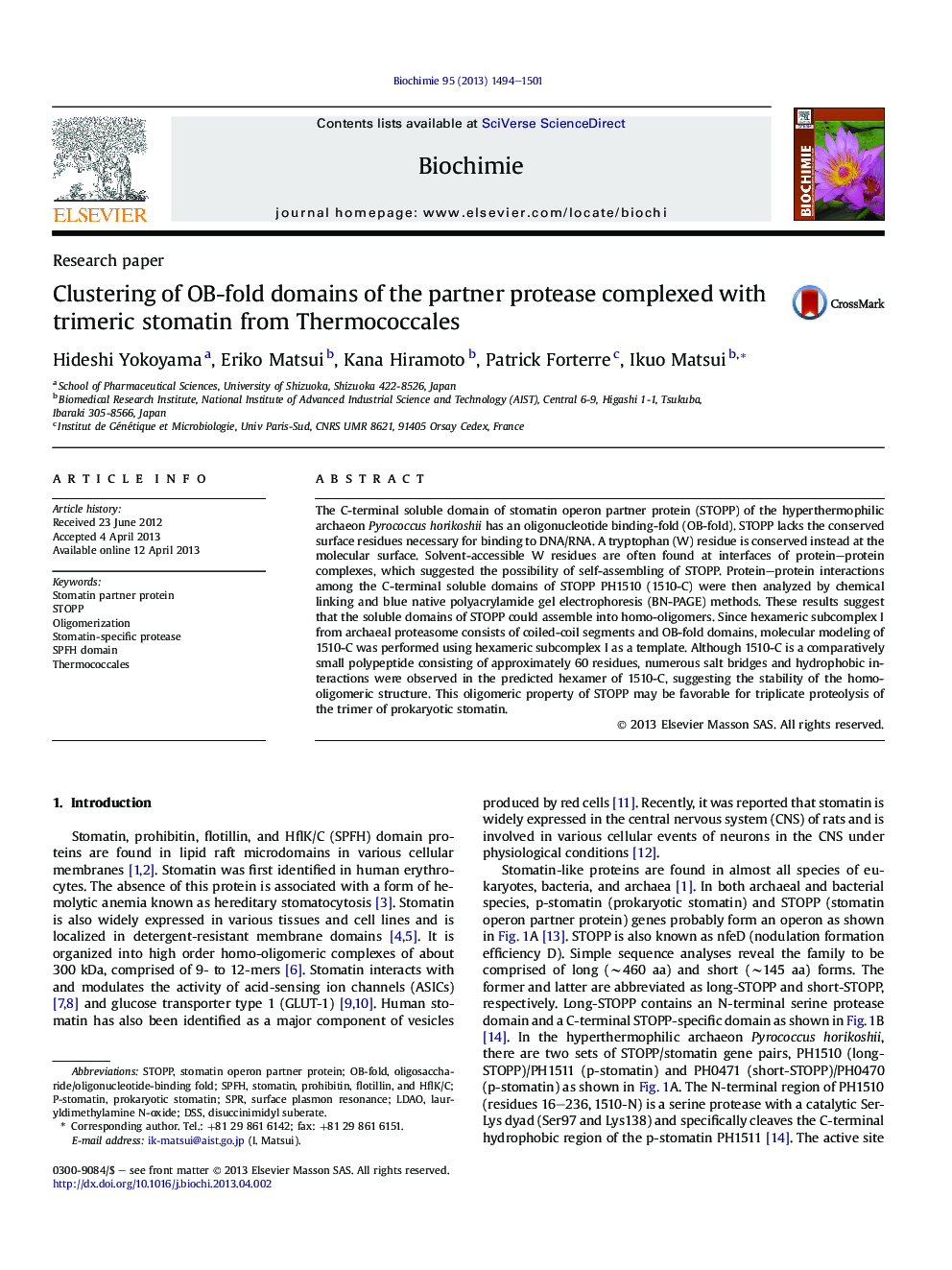| Article ID | Journal | Published Year | Pages | File Type |
|---|---|---|---|---|
| 10803835 | Biochimie | 2013 | 8 Pages |
Abstract
The C-terminal soluble domain of stomatin operon partner protein (STOPP) of the hyperthermophilic archaeon Pyrococcus horikoshii has an oligonucleotide binding-fold (OB-fold). STOPP lacks the conserved surface residues necessary for binding to DNA/RNA. A tryptophan (W) residue is conserved instead at the molecular surface. Solvent-accessible W residues are often found at interfaces of protein-protein complexes, which suggested the possibility of self-assembling of STOPP. Protein-protein interactions among the C-terminal soluble domains of STOPP PH1510 (1510-C) were then analyzed by chemical linking and blue native polyacrylamide gel electrophoresis (BN-PAGE) methods. These results suggest that the soluble domains of STOPP could assemble into homo-oligomers. Since hexameric subcomplex I from archaeal proteasome consists of coiled-coil segments and OB-fold domains, molecular modeling of 1510-C was performed using hexameric subcomplex I as a template. Although 1510-C is a comparatively small polypeptide consisting of approximately 60 residues, numerous salt bridges and hydrophobic interactions were observed in the predicted hexamer of 1510-C, suggesting the stability of the homo-oligomeric structure. This oligomeric property of STOPP may be favorable for triplicate proteolysis of the trimer of prokaryotic stomatin.
Keywords
Related Topics
Life Sciences
Biochemistry, Genetics and Molecular Biology
Biochemistry
Authors
Hideshi Yokoyama, Eriko Matsui, Kana Hiramoto, Patrick Forterre, Ikuo Matsui,
